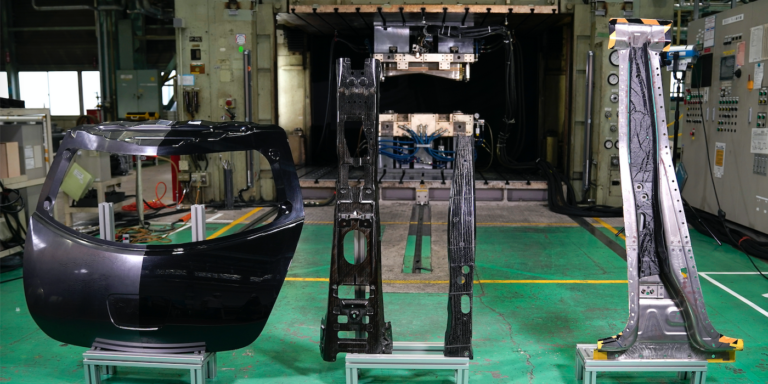There are clear benefits of using carbon fibre when it comes to vehicle dynamics, but the material is expensive compared with materials such as steel. Along with the difficulty in shaping CFRP (carbon fibre reinforced plastics) parts, the material has not yet been suitable for the mass production of automotive components.
However, Nissan has developed a new production process that it says could enable CFRP to be used in the construction of more mass-market cars, reducing their weight and potentially lowering their centre of gravity when applied to upper body parts. Nissan claims its new process can cut the lead time to develop CFRP components by up to 50%, and reduce the cycle times for moulding by about 80%, compared with conventional methods.
The key is a new approach to the existing production method for CFRP, known as compression resin transfer moulding. The existing method involves forming carbon fibre into the right shape and setting it in a die, with a slight gap between the upper die and the carbon fibres. Resin is then injected into the fibre and left to harden.
Nissan’s engineers have developed techniques that can accurately simulate the permeability of the resin in carbon fibre, while visualising resin flow behaviour in a die using an in-die temperature sensor and a transparent die. The result of the successful simulation, says Nissan, is a high-quality component with shorter development time.





